Rhododendrons are beautiful, flowering shrubs that are popular in many gardens. However, if you notice that the leaves of your rhododendron are turning yellow with brown spots, it can be concerning.
This is a sign that something is wrong with your plant, and it is important to diagnose the problem and take appropriate action to save your shrub.
Understanding Rhododendron Leaves Turning Yellow with Brown Spots can be challenging since there are many potential causes. Some common causes of leaf discoloration in rhododendrons include nutrient deficiencies, fungal infections, and insect infestations.
In some cases, environmental factors such as too much sun or too little water can also cause leaf discoloration.
If you are struggling with Rhododendron Leaves Turning Yellow with Brown Spots, don’t worry. There are steps you can take to diagnose and treat the problem. By understanding the common causes of leaf discoloration, you can take appropriate action to save your plant and keep it healthy for years to come.
Key Takeaways on Rhododendron Leaves Turning Yellow with Brown Spots
- Leaf discoloration in rhododendrons can be caused by a variety of factors, including nutrient deficiencies, fungal infections, and insect infestations.
- To diagnose the problem, examine the leaves closely and look for other signs of stress, such as wilting or yellowing leaves.
- By taking appropriate action, such as fertilizing, pruning, or treating for pests, you can save your rhododendron and keep it healthy.
See these other popular posts:
- Pot Leaves Turning Yellow with Brown Spots
- Yellow Leaves and Brown Spots On Plumeria Leaves
- Philodendron Leaves Turning Yellow with Brown Spots
Understanding Rhododendron Leaves Turning Yellow with Brown Spots
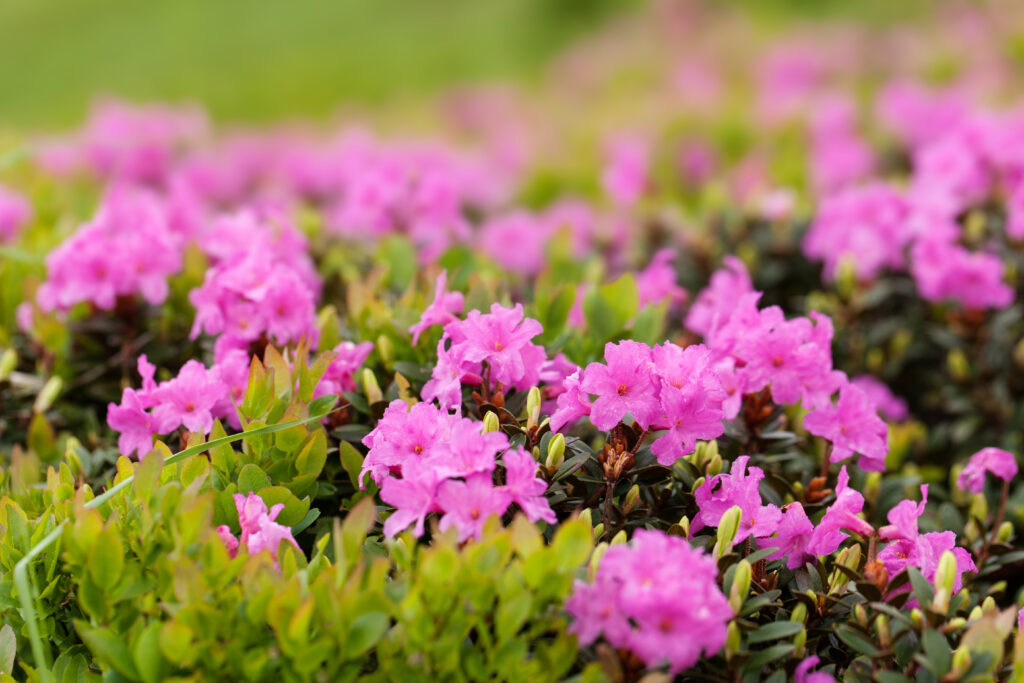
Rhododendron leaves turning yellow with brown spots can be a sign of several issues. In this section, we will discuss the possible causes of this problem and what can be done to fix it.
One of the most common reasons for yellowing leaves with brown spots is a fungal disease called leaf spot. This disease is caused by a fungus that thrives in humid conditions and can spread rapidly in wet weather. The spots on the leaves are usually circular and can range in size from small dots to larger patches.
If left untreated, the leaves can turn completely brown and fall off the plant. To prevent leaf spot, it is important to keep the leaves dry by watering the plants at the base and avoiding overhead watering. Additionally, removing any infected leaves and pruning the plant to improve air circulation can help prevent the spread of the disease.
Another possible cause of yellowing leaves with brown spots is a nutrient deficiency. Rhododendrons require specific nutrients to thrive, and if they are not getting enough of these nutrients, the leaves can start to turn yellow and develop brown spots. One common nutrient deficiency that can cause this problem is iron.
Iron deficiency can be caused by alkaline soil, which can prevent the plant from absorbing enough iron. To fix this issue, you can apply an iron supplement to the soil or use a fertilizer specifically formulated for rhododendrons.
Finally, yellowing leaves with brown spots can also be a sign of stress caused by environmental factors such as extreme temperatures, drought, or exposure to chemicals. If you suspect that your rhododendron is stressed, it is important to identify the cause of the stress and address it as soon as possible.
This may involve providing extra water during dry periods, moving the plant to a more suitable location, or avoiding the use of chemicals that could be harming the plant.
Rhododendron Leaves Turning Yellow with Brown Spots – 4 Common Problems
Rhododendrons are beautiful and popular shrubs that can add color and texture to any garden. However, one of the most common problems that gardeners face is yellowing leaves with brown spots. This can be caused by a variety of factors, including nutrient deficiencies, fungal diseases, pests, and environmental factors.
1. Nutrient Deficiencies
Rhododendrons are acid-loving plants and require a specific pH range to thrive. If the soil pH is too high, the plant may not be able to absorb essential nutrients such as iron, magnesium, and manganese. This can cause yellowing leaves with brown spots, a condition known as chlorosis.
To prevent nutrient deficiencies, it’s important to test the soil pH and adjust it accordingly. Gardeners can add acidic fertilizers or organic matter such as peat moss to lower the pH level. Additionally, regular fertilization with a balanced fertilizer can help provide the necessary nutrients.
2. Fungal Diseases
Fungal diseases can also cause yellowing leaves with brown spots in rhododendrons. One common disease is Phytophthora root rot, which is caused by a soil-borne fungus. This disease can cause the leaves to turn yellow and wilt, and the plant may eventually die.
Preventing fungal diseases involves maintaining good plant hygiene, such as removing dead leaves and branches and avoiding overwatering. Fungicides can also be used to treat infected plants, but prevention is key.
3. Pests
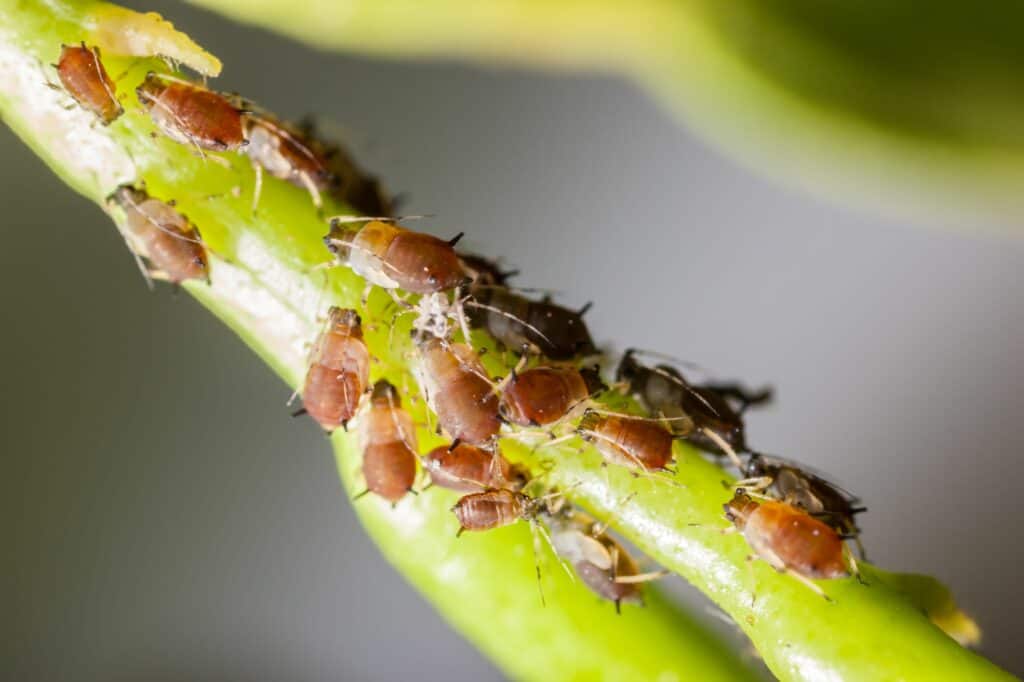
Several pests can cause yellowing leaves with brown spots in rhododendrons. One of the most common is the lace bug, which feeds on the underside of the leaves and causes yellow spots. Spider mites and thrips can also cause similar damage.
To prevent pest damage, it’s important to maintain good plant hygiene and keep the area around the plant free of debris. Insecticides can also be used to treat infected plants.
Environmental Factors
Environmental factors such as sunlight, moisture, and extreme temperatures can also cause yellowing leaves with brown spots in rhododendrons. Too much sunlight can cause sunscald, while too little can cause the plant to become leggy and weak. Overwatering can lead to root rot, while drought can cause the leaves to wilt and turn yellow.
To prevent environmental damage, it’s important to provide the plant with the right amount of sunlight and water. Mulching can help retain moisture and regulate soil temperature. Additionally, protecting the plant from extreme temperatures can help prevent damage.
In conclusion, yellowing leaves with brown spots in rhododendrons can be caused by a variety of factors, including nutrient deficiencies, fungal diseases, pests, and environmental factors.
Gardeners can prevent this problem by maintaining good plant hygiene, testing the soil pH, providing the necessary nutrients, and protecting the plant from pests and environmental damage.
Diagnosing the Problem
If you notice yellow leaves with brown spots on your rhododendron, it’s important to diagnose the problem quickly to prevent further damage to your plant. There are several potential causes for this issue, including nutrient deficiencies, fungal infections, pests, and environmental factors.
1. Spotting Nutrient Deficiencies
One potential cause of yellow leaves with brown spots on your rhododendron is a nutrient deficiency. This could be caused by a lack of iron, magnesium, or other essential nutrients.
To identify a nutrient deficiency, it’s important to look for other symptoms in addition to yellow leaves. For example, a lack of magnesium can cause leaves to turn yellow around the edges, while a lack of iron can cause leaves to turn yellow between the veins.
2. Identifying Fungal Infections
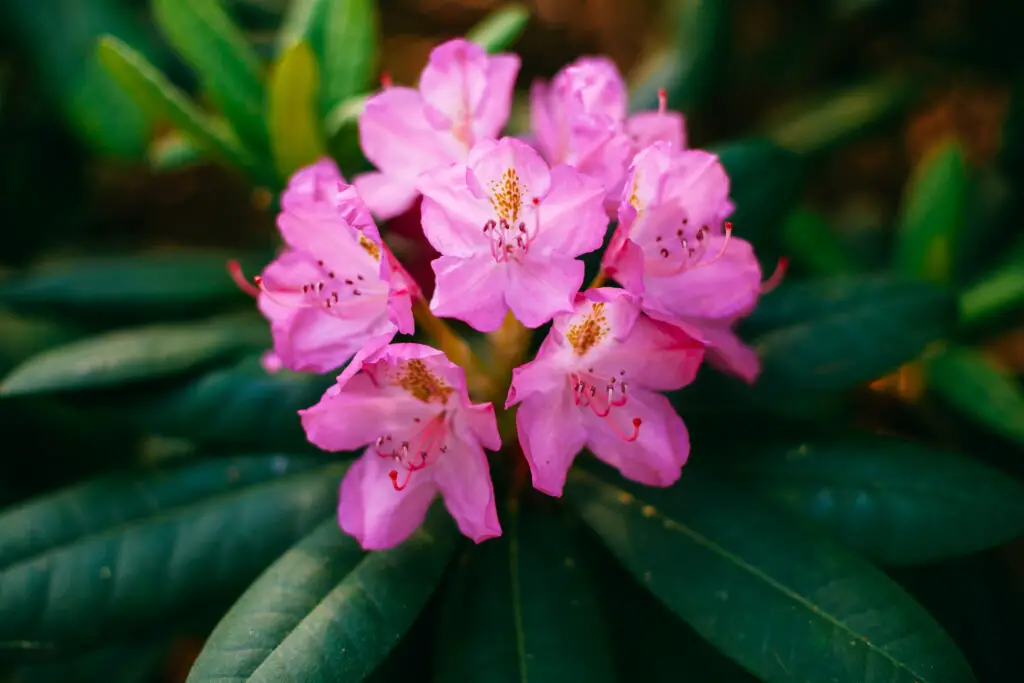
Fungal infections can also cause yellow leaves with brown spots on your rhododendron. One common fungal infection that affects rhododendrons is powdery mildew.
This fungus can cause leaves to turn yellow and develop a powdery white coating. Another potential fungal infection is leaf spot, which can cause brown spots on the leaves surrounded by yellow halos.
3.Detecting Pests
Pests like aphids and mites can also cause yellow leaves with brown spots on your rhododendron. These pests feed on the leaves, causing damage that can lead to discoloration and spots. To detect pests, examine your plant closely for signs of insects or damage to the leaves.
4. Assessing Environmental Factors
Environmental factors like soil pH and acidity can also cause yellow leaves with brown spots on your rhododendron.
Rhododendrons prefer acidic soil, so if your soil is too alkaline, it can affect the plant’s ability to absorb nutrients. It’s important to test your soil to determine its pH and acidity levels and adjust as necessary to ensure your rhododendron is getting the nutrients it needs.
Treatment and Prevention
When it comes to treating and preventing yellowing with brown spots on Rhododendron leaves, there are a few different approaches you can take. These include correcting nutrient deficiencies, treating fungal infections, managing pests, and adjusting environmental conditions.
1. Correcting Nutrient Deficiencies
One common cause of yellowing with brown spots on Rhododendron leaves is a lack of nutrients in the soil. In particular, the plant may be deficient in iron or magnesium. To correct this issue, gardeners can apply a fertilizer that is high in these nutrients. Iron sulfate and Epsom salts are two options that can be effective.
2. Treating Fungal Infections
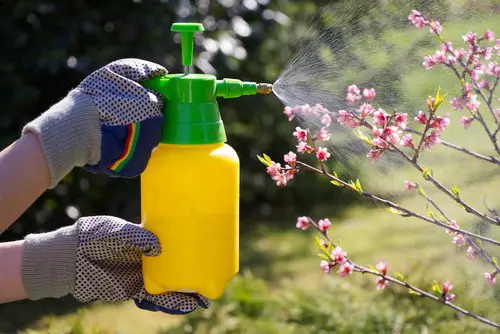
Fungal infections can also cause yellowing with brown spots on Rhododendron leaves. In these cases, gardeners may need to apply a fungicide to the plant to help control the spread of the infection.
Copper-based and sulfur-based fungicides are two options that can be effective. However, it’s important to prune off already-damaged leaves prior to treatment to ensure that any spores cannot shift to healthier leaves during spraying.
3. Managing Pests
Pests like spider mites and thrips can also cause yellowing with brown spots on Rhododendron leaves. In these cases, gardeners may need to apply an insecticide to the plant to help control the pests. Neem oil and horticultural oil are two options that can be effective. Beneficial nematodes can also be used to control some types of pests.
4. Adjusting Environmental Conditions
Finally, gardeners may need to adjust the environmental conditions around their Rhododendron plants to prevent yellowing with brown spots on the leaves.
For example, if the plant is getting too much sun, it may need to be moved to a shadier location. On the other hand, if the plant is not getting enough water, it may need to be watered more frequently.
Care and Maintenance of Rhododendrons
Watering and Fertilizing
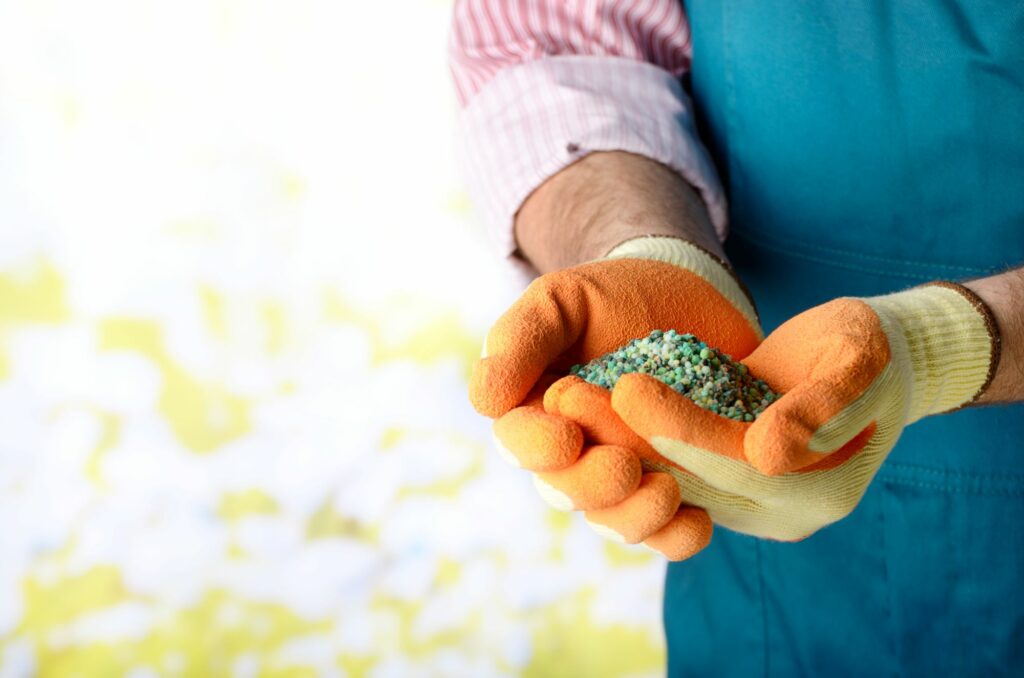
Rhododendrons need regular watering, especially during the dry season. However, overwatering can lead to root rot, which can cause leaves to turn yellow with brown spots.
To avoid this, it is recommended to water rhododendrons deeply once a week, ensuring that the soil is moist but not waterlogged. A soil moisture meter can be used to determine when it is time to water.
Fertilizing rhododendrons is also important for their proper growth and health. A balanced fertilizer with a 10-10-10 or 12-12-12 NPK ratio is recommended.
Fertilizer should be applied in early spring before new growth appears and again in late spring or early summer after the first flush of growth. Avoid over-fertilizing as it can lead to excessive growth and weak stems.
Pruning and Sterilizing
Pruning is an essential part of rhododendron care. Dead or diseased wood should be removed promptly. Regular pruning can also help to maintain the shape and size of the plant. Pruning should be done after blooming to avoid cutting off next year’s flower buds.
Sterilizing pruning tools is important to prevent the spread of diseases. Tools can be sterilized by wiping them with rubbing alcohol or a solution of one-part bleach to nine parts water.
Soil and Sunlight Requirements
Rhododendrons prefer acidic soil with a pH between 4.5 and 6.0. A soil test can be done to determine the pH level of the soil. If the soil is too alkaline, sulfur can be added to lower the pH level.
Rhododendrons thrive in partial shade to full sun, but too much direct sunlight can damage the leaves. Planting them in a location that receives morning sun and afternoon shade is ideal.
Choosing the Right Rhododendron Varieties

Rhododendrons are a popular choice for gardeners who want to add a splash of color to their landscapes. However, not all rhododendron varieties are created equal.
Some are easier to grow than others, and some are more resistant to diseases and pests. Choosing the right variety can make all the difference in the success of your rhododendron planting.
When selecting a rhododendron variety, it is important to consider the following factors:
1. Climate
Rhododendrons are native to Asia, Europe, and North America, and there are over 1,000 different species and varieties available. Some rhododendrons are better suited to cold climates, while others thrive in warmer regions. It is important to choose a variety that is well-suited to your local climate.
2. Size
Rhododendrons come in a variety of sizes, ranging from small shrubs to large trees. When selecting a variety, consider the available space in your garden and choose a size that is appropriate for the area.
3. Flower Color
Rhododendrons are known for their vibrant flowers, which come in a range of colors, including pink, red, white, and purple. When selecting a variety, choose a flower color that complements the other plants in your garden.
4. Disease Resistance
Some rhododendron varieties are more resistant to diseases and pests than others. When selecting a variety, choose one that is known for its disease resistance to reduce the risk of problems down the road.
5. Easy to Grow
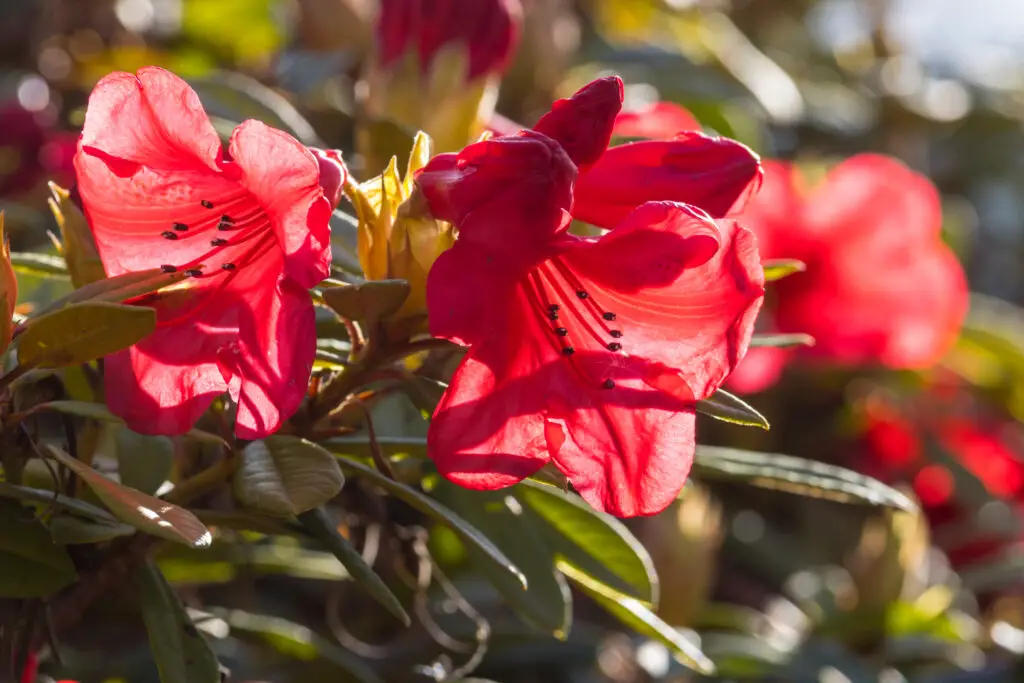
Finally, choose a rhododendron variety that is easy to grow. Some varieties require more maintenance than others, so choose one that fits your gardening style and level of experience.
Frequently Asked Questions
How do you treat yellow leaves on rhododendrons?
Treating yellow leaves on rhododendrons depends on the cause of the problem. If the soil is too alkaline, a mineral deficiency may be causing chlorosis, which can be fixed by adding iron sulfate to the soil.
If the plant has a fungal disease, it may require a fungicide treatment. In some cases, yellow leaves may be a sign of overwatering, which can be resolved by reducing watering frequency or improving soil drainage.
What to do for rhododendron with yellow leaves?
For rhododendrons with yellow leaves, it is important to identify the cause of the problem before taking any action. If the soil is too alkaline, adding iron sulfate to the soil can help.
If the plant has a fungal disease, a fungicide treatment may be necessary. Overwatering can also cause yellow leaves, so it is important to ensure the plant is not being watered too frequently.
Why are my leaves turning yellow with brown spots?
Yellow leaves with brown spots on rhododendrons can be a sign of a fungal disease, such as leaf spot or rust. These diseases can be treated with a fungicide, but it is important to identify the specific disease before treatment. Overwatering or underwatering can also cause yellow leaves with brown spots.
How to treat brown spots on rhododendron leaves?
Treating brown spots on rhododendron leaves depends on the cause of the problem. If the spots are caused by a fungal disease, a fungicide treatment may be necessary.
If the spots are caused by overwatering, reducing watering frequency can help. In some cases, brown spots may be a sign of nutrient deficiencies, which can be resolved by fertilizing the plant.
Why are my rhododendron leaves turning brown and dying?
Rhododendron leaves turning brown and dying can be a sign of a fungal disease, such as phytophthora root rot or botryosphaeria canker. These diseases can be treated with fungicide, but it is important to identify the specific disease before treatment. Overwatering or underwatering can also cause brown and dying leaves.
How to prevent yellow spots on rhododendron leaves?
Preventing yellow spots on rhododendron leaves involves maintaining proper plant care. This includes ensuring the soil is well-draining and not too alkaline, avoiding overwatering or underwatering, and providing adequate sunlight and nutrients.
Regularly inspecting the plant for signs of disease and promptly treating any issues can also help prevent yellow spots on leaves.

Hey, I’m Lisa and I’ve been an avid gardener for over 30 years. I love writing, talking and living in the garden! Feel free to connect with me on my socials below


